From these earliest minutes, here’s to a year’s worth of rabbit-rabbit luck, leaps of faith into new beginnings…
… plus a past-and-future New Year’s nod to novelist F. Scott Fitzgerald’s classic, The Great Gatsby, on the 100th anniversary of its publication. My paperback copy pictured here, much-dogeared since at least the ‘80s, bears the 1925 copyright.
Upcoming galas and NYC tours celebrating Gatsby-era sites and tone sound like fun dress-up and travel.
But for those of us who cherish the tragic novel for its characters, psychological complexity and timelessly nuanced social commentary, reviews of the upbeat current Broadway musical version are wince-worthy. See what you think:
Review: A New ‘Great Gatsby’ Leads With Comedy and Romance (The New York Times.)
This musical adaptation, now on Broadway, is a lot of Jazz Age fun. But it forgot that Fitzgerald’s 1925 novel endures because it is a tragedy.
🔵
But today’s topical spotlight (at center and left above) touches on the complex issue of immigration, an intense national and newsworthy concern in the months ahead. More personally and closer to home, a piece of it’s become a volunteer passion.
“Behold”
Today’s title word voila is from the French for “behold, to see, to view.” Earlier it was derived from the Latin: videre (“to see”) + la (“there”), from ille — meaning the downright Southern-sounding “see there… yonder!”
In recent months a priority for me has become serving as many volunteer-shifts as possible with U.S. Citizenship and Immigration Services (USCIS) at the Department of Homeland Security in Charlotte each Friday. That’s when swearing-in ceremonies for the Western federal court district of North Carolina (from Charlotte to Asheville areas) are held. Immigrants who have completed the rigorous, years-long process become naturalized new U.S. citizens.
As one of some 31 nationwide trained volunteer teams with the nonpartisan (and non-gender-restricted!) League of Women Voters, following the Oath of Allegiance ceremonies we register new citizens who want to participate in their new country’s democracy as voters.
Often having surmounted daunting challenges to be able to do that, these newly minted Americans epitomize today’s newShrink themes for the start of a new year full of unknowns for us all.
Their hope is infectious, their courage an inspiration.
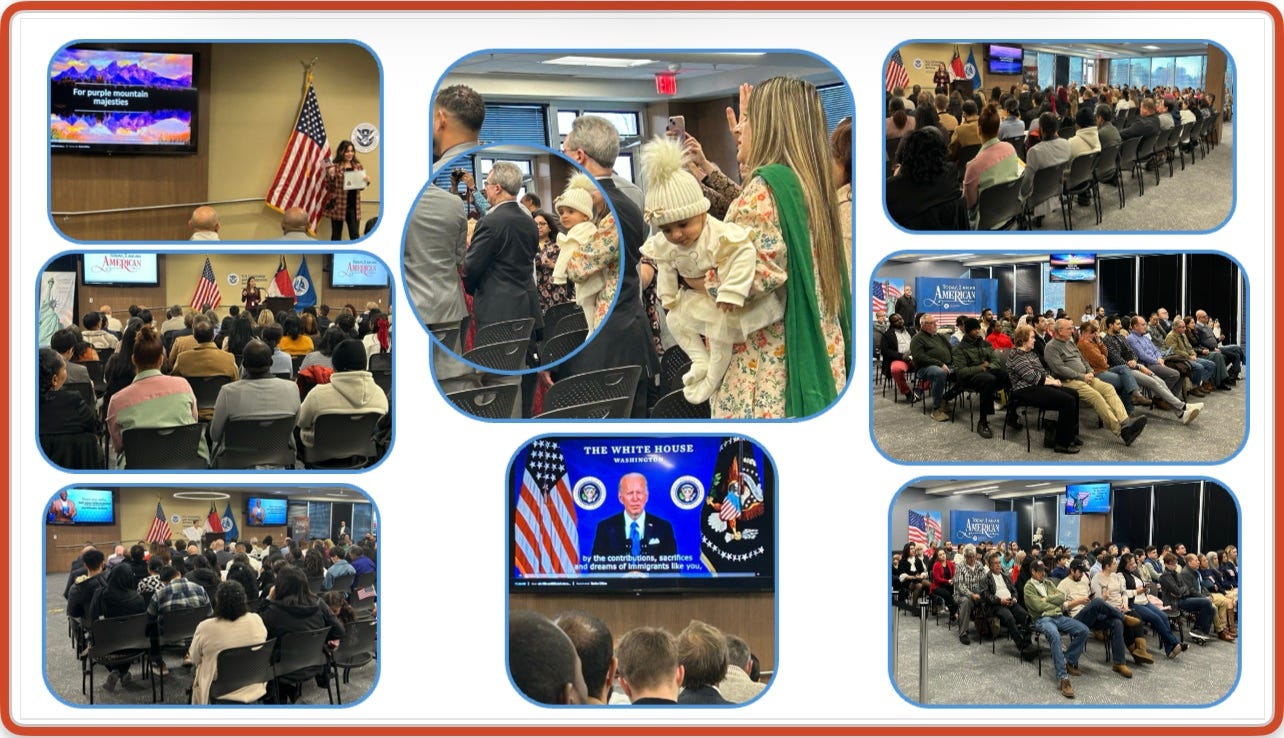
With the new administration to begin later this month there will be plenty of news, and newShrink, attention ahead on looming complex political, economic, cultural and humanitarian aspects of American immigration. Today’s narrow focus is to provide a basic factual foundation and a glimpse inside one federal constitutional aspect. It’s a process many or most of us probably have not experienced, or maybe even thought about.
Worth noting, the Department of Homeland Security runs a tightly monitored and rigorously controlled facility. The building access, scanning and screening are noticeably more thorough and intense than TSA scrutiny at the airport.
The ceremony is emotionally moving at times — during singing of the national anthem and newly sworn citizens’ first pledge of allegiance, for example. This is especially so for new volunteers and visitors. But seasoned veterans and officials are visibly affected, too.
🔵
profound commitment
For me, factual content of the ceremony was eye-opening. I find myself thinking all voting Americans — certainly those elected to govern — would do well to try swearing out loud, at least once, to the things this oath requires of naturalized Americans.
How many of us would ask some of this from our own children, ourselves or loved ones, in order to choose America?
How about, in order to choose even a different politician, political stance or party?
Here is the Oath of Allegiance, the public oath that you would take at your naturalization ceremony in order to become an American:
I hereby declare, on oath, that I absolutely and entirely renounce and abjure all allegiance and fidelity to any foreign prince, potentate, state, or sovereignty, of whom or which I have heretofore been a subject or citizen;
that I will support and defend the Constitution and laws of the United States of America against all enemies, foreign and domestic;
that I will bear true faith and allegiance to the same;
that I will bear arms on behalf of the United States when required by the law;
that I will perform noncombatant service in the Armed Forces of the United States when required by the law;
that I will perform work of national importance under civilian direction when required by the law; and
that I take this obligation freely, without any mental reservation or purpose of evasion;
so help me, God.
Similarly, the 5 requirements for immigrants to become a U.S. citizen are neither brief nor easy. Each individual must:
Be at least 18 years old;
Be a legal permanent resident (LPR) for at least five years;
Meet continuous residence and presence requirements in this country;
Have a tested basic understanding of U.S. history and government;
Have tested ability to read, write, and speak basic English.
To become naturalized, immigrants must also demonstrate they have met requirements for good moral character based on the standards of average citizens in their community. This includes not having criminal convictions for certain crimes.
🔵
by the numbers & geographic range
In Charlotte, through the League of Women Voters USCIS continues to schedule 70 new citizens for each ceremony in three time slots each Friday. In the NC Western District 2024 has been a big year, with 148 naturalization ceremonies serving just over 9.000 new citizens and registering almost 6,000 as fully verified legal voters.
In the ceremonies I’ve attended so far, new citizens have come from an average of 40 native countries around the world. There’s a wide age range, though most appear to be young- to middle-aged adults.
Chief immigration judges for federal districts nationwide are appointed by the US Attorney General in the Department of Justice. Judge Sheila McNulty and assistants serve the NC Western District.
Nationwide, in 2022, the most recent full-year national figures available, almost 1 million immigrants became naturalized citizens. That year 31 League volunteer teams across the country reported attending nearly 800 naturalization ceremonies and registering over 37,000 new Americans to vote.
Interested in volunteering to register new citizens in your area? Browsing the League of Women voters website locally or nearby should help you get started — and do contact me if you’d like to discuss individually.
🔵
long, intensely fluctuating political winds
With immigration a key lightning-rod, and much-demagogued, election-year issue at every level in American government, effects on naturalization of legitimately eligible citizens are as yet unknown. From a factual perspective of chronology on the topic, here’s a series of NYT stories over the past five years, in order:
February 2019: Wait Times for Citizenship Have Doubled in the Last Two Years
December 2020: Trump Administration Faces Bipartisan Calls to End Citizenship Delays
Lawmakers from both parties are urging the Trump administration to conduct the oath remotely to make up for a pause in naturalization ceremonies during the health crisis.
January 2023: This Land Becomes Their Land. New U.S. Citizens Hit a 15-Year High
Nearly one million immigrants became Americans in 2022 after the pandemic delayed the process and prevented hundreds of thousands of people from voting in the 2020 election.
August 2024: Immigrants Are Becoming U.S. Citizens at Fastest Clip in Years
The government has reduced a backlog of applications that built up during the Trump administration. New citizens say they are looking forward to voting in November.
🔵
in hope and community
Here are some closing notes on what for me packs a powerful punch with experiencing the naturalization ceremonies. As illustrated in above photos of crowded rows with vast numbers of supporters and families there to witness and applaud:
Naturalization is not an isolated-individual accomplishment.
It is a multi-year, multi-step process — not an either/or, on/off light switch.
For every one or two naturalizing immigrants undergoing the process, even aside from family, their lives and support systems necessarily include knowledgeable-citizen friends, counselors, teachers, and coworkers on the jobs they do while also working to become citizens.
Not (yet) a naturalized citizen does not mean illegal; in fact, the only way an immigrant can become a naturalized citizen is to be here legally for a significant amount of time.
It was about the time I was having these thoughts, and savoring one of my earlier volunteer shifts, that a former Pacifica colleague shared the “stairway of helping hands” image from artist Raphael Lopez. For me it captures a crucial “it takes a village and benefits us all” aspect of naturalization.
Before closing today, if you’ve been reading newShrink awhile you may recognize here some favorite pieces of what’s now become an annual New Year’s message.
🔵
On flying-leaps and new beginnings
Psychology, particularly of the depth/soul-engaged kind and consistent with many religious traditions, has many references, images and theoretical processes involving leaps of faith. Usually at best disruptive of usual rhythms, these are situations that confront and engage us with the unconscious soul (for believers the realm of the divine). Leaps present from the least-known shadowy regions of ourselves that have been previously unknown to us — or at least unclaimed and perhaps resisted.
a psychological initiation
Especially in our era’s popularity of so-called positive ego psychology, the phrase leap of faith can take on a jaunty or what-the-heck tone. From the depth-psychotherapy perspective this doesn’t capture the complexity, enormous discipline and painful holding of opposite truths experienced by a person going through such transformative change. In my view, these are the archetypal initiatory quests of modern life.
Working recently with naturalizing new immigrant-citizens, this keeps coming to mind: That there must have been many such wrestlings with these kinds of thoughts and feelings, on each of their long, crisis-laden paths to choosing a whole new country — in so many ways, literally, a whole new life. From them, we all can learn much for our own journeys.
In today’s American life even sound-bite versions of key ideas from the mythologist Joseph Campbell, whose work has so influenced depth psychology, can be used mistakenly to emphasize adventure minus the hard work. For example, his “Follow your bliss…” can seem like the graceful leaping dancer in the image above…
… while in the depths of our psyche the “holding the tension of opposites” that the soul demands can look and feel more like Dante’s abduction to the abyss and circles of hell. Or in a pinch, we fall back on anything to get us off the painful cliff, which can sound like the classic Coach Yogi Berra conundrum:
“When you come to a fork in the road, take it.”
This one from Campbell is a little better at capturing both the inspirational push and the reality when we’re facing the fearsome dilemmas that our psychological, even spiritual, growth sometimes demands:
“A bit of advice given to a Native American at the time of his initiations: ‘As you go the way of life, you will see a great chasm.
Jump.
It is not as wide as you think.’”
(And well, if there weren’t a chasm, it wouldn’t be much of an initiation or require a leap of faith, now would it?!)
As usual, I like best the way James Hillman captures both light and shadow aspects of these moments of profoundly alive, soul-engaged leap of faith:
Shifting from psychology, and back to Fitzgerald for such leaps in literature, there’s a romantic readiness mentioned in a long-favorite quote in Gatsby. Narrator Nick Carraway introduces the title character Jay Gatsby:
…”there was something gorgeous, some heightened sensitivity to the promises of life, as if he were related to one of those intricate machines that can register earthquakes ten thousand miles away. This responsiveness had nothing to do with the flabby impressionability which is dignified under the name of ‘creative temperament’ —it was an extraordinary gift for hope, a romantic readiness such as I have never found in any other person and it is not likely I shall ever find again. No—Gatsby turned out all right in the end…”
🔵
gifts & gratitude
With these things in mind, again I leave you with Happy You Year wishes for:
🔷 an extraordinary gift for hope… for Fitzgerald’s heightened sensitivity to the promises of life…
🔷 a psyche-soundtrack of Winston’s musical Joy in the morning, with scores yet to be heard…
and, as needed and appropriate,
🔷 even that fathomless depth-psychological wisdom of Coach Yogi Berra: When you come to a fork in the road, take it.
As posted awhile back from a longtime newspaper friend:
I am so thankful to you for reading newShrink, connecting with your ideas and material, and as always I look forward to hearing from you.
🔵
Meanwhile, celebrating first Charlotte New Year’s Eve in decades is a past-and-future, old-yet-all-new adventure. It started with streetcar ride to and from an early lovely dinner at a favorite uptown classic spot, then back for TV in time to catch Penn State in the Fiesta Bowl.
And at the new getaway-condo, who knew or even imagined: Its entry deck might offer a peek at Big-City New Year’s Fireworks amid this already color-lit skyline?
The old reporter in me must investigate. (Of course.)
So, that is all I have for now!
🦋💙 tish
… it is important that awake people be awake,
or a breaking line may discourage them back to sleep;
the signals we give — yes or no, or maybe —
should be clear: the darkness around us is deep.
— William Stafford, “A Ritual to Read to Each Other”
🔵

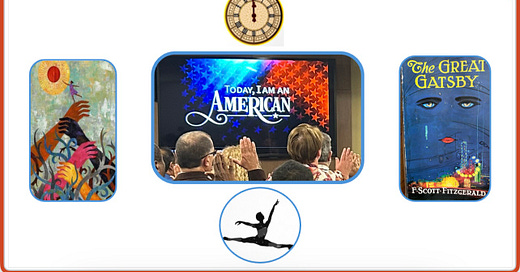



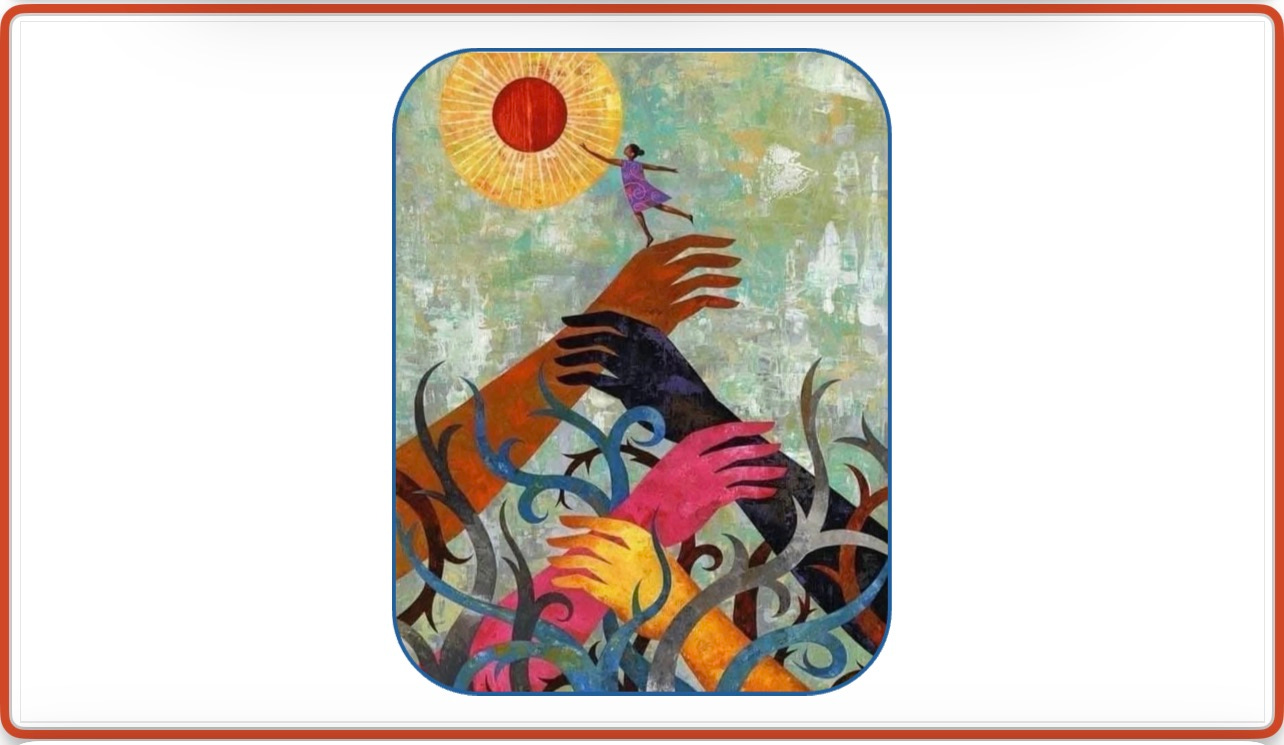

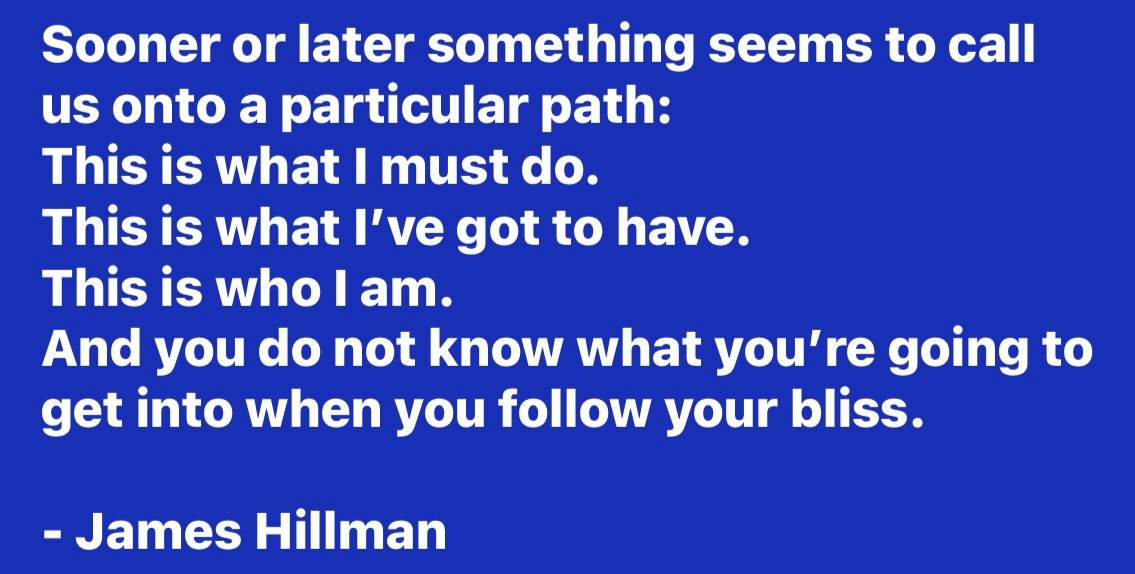
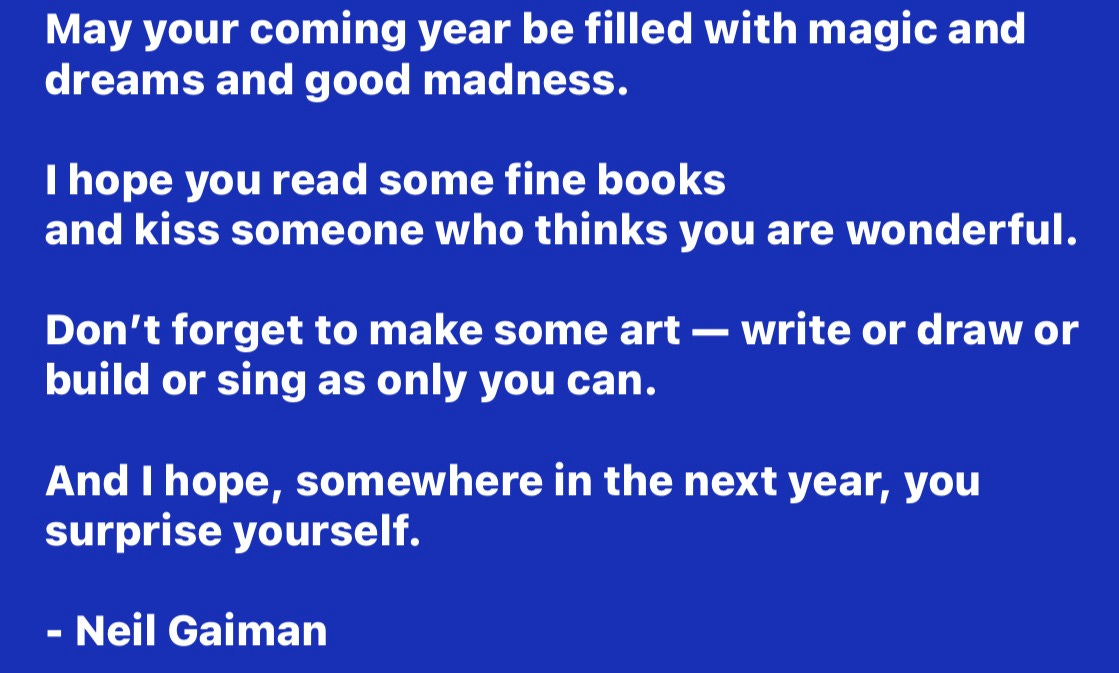

Thank you and Happy New Year, Tish!